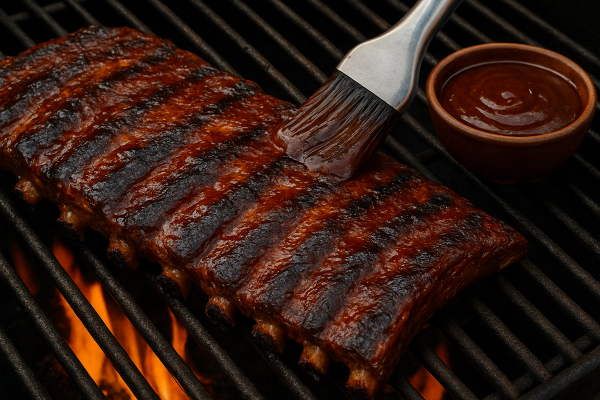Probiotics, often called “good” bacteria, are essential for maintaining a healthy digestive system. They help balance the gut microbiome, support digestion, and strengthen the immune system. This guide will explore the benefits of probiotics, provide a variety of delicious recipes, and offer practical tips for incorporating these beneficial microbes into your diet.¶
Table of Contents¶
- Introduction to Probiotics
- Health Benefits of Probiotics
- Probiotic-Rich Foods
- Probiotic Recipes for Digestive Health
- Breakfast Ideas
- Lunch and Dinner Options
- Snacks and Desserts
- Fun Facts and Unique Insights
- FAQs
- Conclusion
#
1. Introduction to Probiotics#
Probiotics are live microorganisms that, when consumed in adequate amounts, confer health benefits to the host. These beneficial bacteria are naturally found in various fermented foods and are also available as dietary supplements. The primary role of probiotics is to support the balance of the gut microbiota, which plays a crucial role in digestion, immune function, and overall health.¶
2. Health Benefits of Probiotics#
1. Improved Digestion: #
Probiotics help break down food and absorb nutrients more efficiently, reducing symptoms of digestive disorders such as bloating, constipation, and diarrhea.¶
2. Enhanced Immune Function: #
By promoting a healthy balance of gut bacteria, probiotics can help strengthen the immune system and improve the body’s ability to fight off infections.¶
3. Balanced Gut Microbiome:#
A healthy gut microbiome supports various bodily functions, including metabolism, mental health, and inflammation control.¶
4. Prevention of Gastrointestinal Disorders: #
Probiotics can help prevent and manage conditions such as irritable bowel syndrome (IBS), inflammatory bowel disease (IBD), and antibiotic-associated diarrhea.¶
5. Support for Mental Health: #
Emerging research suggests that the gut-brain axis links digestive health to mental well-being. Probiotics may help improve mood and reduce symptoms of anxiety and depression.¶
3. Probiotic-Rich Foods#
Incorporating probiotic-rich foods into your diet is an excellent way to reap the benefits of these beneficial bacteria. Here are some common probiotic foods:¶
1. Yogurt: Yogurt is one of the most popular sources of probiotics. Look for live and active cultures on the label to ensure it contains beneficial bacteria.¶
2. Kefir: Kefir is a fermented dairy product similar to yogurt but with a thinner consistency. It contains a diverse range of probiotic strains.¶
3. Sauerkraut: Sauerkraut is fermented cabbage that provides a rich source of probiotics. It also adds a tangy flavor to dishes.¶
4. Kimchi: Kimchi is a Korean fermented vegetable dish, typically made with cabbage and radishes. It is spicy and full of probiotics.¶
5. Miso: Miso is a Japanese seasoning made from fermented soybeans. It is commonly used in soups and sauces.¶
6. Tempeh: Tempeh is a fermented soy product with a firm texture and nutty flavor. It is an excellent source of both probiotics and protein.¶
7. Pickles: Naturally fermented pickles are a good source of probiotics. Make sure they are fermented in brine rather than vinegar.¶
8. Kombucha: Kombucha is a fermented tea that contains a variety of probiotic strains. It has a slightly effervescent quality and tangy flavor.¶
#
4. Probiotic Recipes for Digestive Health#
Breakfast Ideas#
1. Probiotic Smoothie Bowl#
A smoothie bowl is a refreshing and customizable breakfast option that can be packed with probiotics.¶
Ingredients:¶
- 1 cup plain yogurt (Greek or regular)
- 1/2 cup frozen berries (blueberries, strawberries, or mixed berries)
- 1 banana
- 1 tbsp honey
- 1 tbsp chia seeds
- Fresh fruit and granola for topping
Instructions:¶
- Blend yogurt, frozen berries, banana, and honey until smooth.
- Pour into a bowl and top with fresh fruit, granola, and chia seeds.
2. Kefir Overnight Oats#
Overnight oats made with kefir are a nutritious and probiotic-rich breakfast option.¶
Ingredients:¶
- 1/2 cup rolled oats
- 1/2 cup kefir
- 1/4 cup chia seeds
- 1 tbsp maple syrup
- 1/2 tsp vanilla extract
- Fresh fruit and nuts for topping
Instructions:¶
- Combine oats, kefir, chia seeds, maple syrup, and vanilla extract in a jar or bowl.
- Stir well and refrigerate overnight.
- Top with fresh fruit and nuts before serving.
3. Probiotic-Packed Avocado Toast#
Avocado toast can be enhanced with probiotic-rich ingredients for a satisfying breakfast.¶
Ingredients:¶
- 1 slice whole-grain bread, toasted
- 1 ripe avocado
- 1/4 cup sauerkraut
- Salt and pepper to taste
- Red pepper flakes (optional)
Instructions:¶
- Mash the avocado and spread it over the toasted bread.
- Top with sauerkraut and season with salt, pepper, and red pepper flakes if desired.
#
Lunch and Dinner Options#
1. Kimchi Fried Rice#
Kimchi fried rice is a flavorful way to incorporate probiotics into a hearty meal.¶
Ingredients:¶
- 2 cups cooked rice (preferably cold)
- 1 cup kimchi, chopped
- 1/2 cup diced vegetables (carrots, bell peppers, or peas)
- 2 cloves garlic, minced
- 2 tbsp soy sauce
- 1 tbsp sesame oil
- 2 eggs (optional)
- Green onions for garnish
Instructions:¶
- Heat sesame oil in a pan over medium heat. Add garlic and vegetables, and cook until tender.
- Add kimchi and rice, stirring to combine.
- Season with soy sauce and cook until heated through.
- If using eggs, scramble them in a separate pan and stir into the rice.
- Garnish with green onions.
2. Miso Soup with Tofu and Seaweed#
Miso soup is a traditional Japanese dish that’s rich in probiotics and makes a soothing meal.¶
Ingredients:¶
- 4 cups vegetable broth
- 1/4 cup miso paste
- 1 cup cubed tofu
- 1/4 cup dried seaweed (wakame)
- 1/2 cup chopped green onions
Instructions:¶
- Heat the vegetable broth in a pot until simmering.
- Dissolve miso paste in a small amount of warm broth and add it back to the pot.
- Add tofu and seaweed, and simmer for 5 minutes.
- Garnish with green onions.
3. Tempeh Stir-Fry#
Tempeh stir-fry is a quick and nutritious dinner option that incorporates probiotics.¶
Ingredients:¶
- 1 cup tempeh, sliced
- 2 cups mixed vegetables (broccoli, bell peppers, carrots)
- 2 tbsp soy sauce
- 1 tbsp hoisin sauce
- 1 tbsp olive oil
- Cooked rice or noodles for serving
Instructions:¶
- Heat olive oil in a pan over medium heat. Add tempeh and cook until browned.
- Add vegetables and stir-fry until tender.
- Stir in soy sauce and hoisin sauce.
- Serve over rice or noodles.
#
Snacks and Desserts#
1. Probiotic Yogurt Parfait#
A yogurt parfait is a simple and delicious snack that’s rich in probiotics.¶
Ingredients:¶
- 1 cup plain yogurt
- 1/4 cup granola
- 1/2 cup mixed berries
- 1 tbsp honey
Instructions:¶
- Layer yogurt, granola, and berries in a glass or bowl.
- Drizzle with honey before serving.
2. Pickled Vegetables#
Pickled vegetables are a crunchy, tangy snack that provides probiotics.¶
Ingredients:¶
- 1 cup sliced cucumbers
- 1 cup sliced carrots
- 1 cup vinegar
- 1 cup water
- 1 tbsp sugar
- 1 tbsp salt
- 1 tbsp pickling spices
Instructions:¶
- Combine vinegar, water, sugar, salt, and pickling spices in a saucepan. Heat until sugar dissolves.
- Place vegetables in a jar and pour the pickling liquid over them.
- Refrigerate for at least 24 hours before eating.
3. Kombucha Ice Pops#
Kombucha ice pops are a refreshing way to enjoy probiotics during warmer months.¶
Ingredients:¶
- 2 cups kombucha
- 1/2 cup fruit juice (optional)
- Fresh fruit pieces
Instructions:¶
- Pour kombucha and fruit juice into ice pop molds.
- Add fresh fruit pieces.
- Freeze until solid.
#
5. Fun Facts and Unique Insights#
1. Historical Use of Probiotics:#
The concept of probiotics dates back to ancient civilizations that practiced fermentation. Foods like yogurt and kefir have been consumed for thousands of years for their health benefits.¶
2. The Gut-Brain Connection:#
Recent research highlights the gut-brain axis, demonstrating that a healthy gut microbiome can influence mental health. Probiotics may help alleviate symptoms of anxiety and depression.¶
3. Probiotics in Different Cultures:#
Various cultures have traditional probiotic foods. For example, Indian cuisine includes fermented foods like dosa and idli, while Eastern European cultures enjoy kvass and kefir.¶
4. Future Trends in Probiotics:#
The future of probiotics may involve personalized nutrition, where specific probiotic strains are tailored to individual health needs. Advances in biotechnology could lead to new probiotic products and applications.¶
5. Environmental Impact:#
Fermentation is an environmentally friendly food preservation method. It reduces food waste and requires less energy compared to other preservation techniques.¶
6. Conclusion#
Incorporating probiotics into your diet through delicious recipes and fermented foods can significantly enhance your digestive health and overall well-being. By understanding the benefits of probiotics and exploring various food ideas, you can make informed choices that support a balanced and healthy lifestyle. Embrace the power of probiotics and enjoy the diverse flavors and benefits they offer.¶














